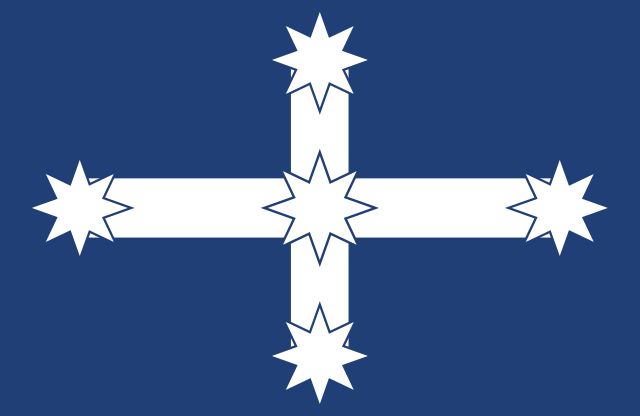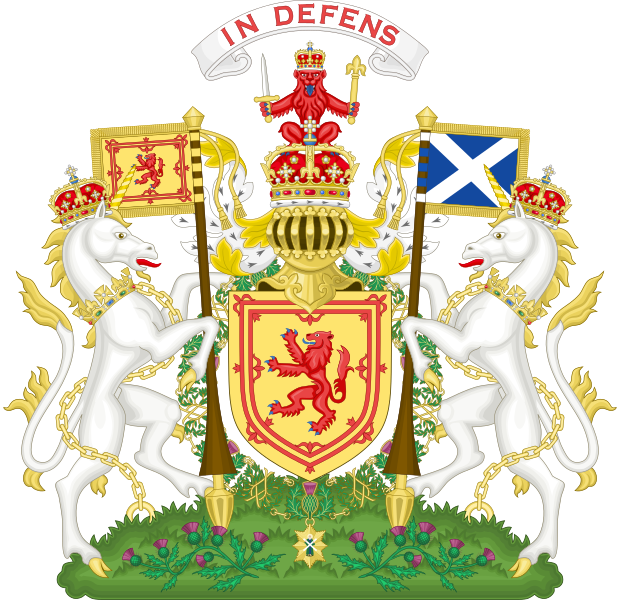Fallowing the publish of the Scottish National Party's (SNP) plan for how an independent Scotland should work, Scottish independence is once again in the news. As far as I am aware no plans have been adopted north or south of the boarder regarding heraldry and
Vexillology if (and that's a big if) Scotland votes yes. Now this post does not reflect my views on the issue, its for the Scottish people to decide, but I am only exploring some of the flag issue for Scotland and the rest of the United Kingdom if they vote yes.
It is unquestionable what the national flag of Scotland on land will be, it will clearly be the cross of
St Andrew, and the Royal coat of arms will probably change from the
current variant to the original pre union of the crowns version:
What about flags at sea? The Scottish saltire is almost exactly the same as the
maritime signal flag M(Mike). Its probable that the Scottish Red Ensign would regain official status, firstly to avoid confusion with a signal flag and secondly to fallow the
red,
white and
blue ensign traditions of many of the Commonwealth countries.
Historic Scottish Red Ensign
My proposal for a Naval Ensign
What about Royal Standards? Would the current
Royal Standard used in Scotland which also has the Royal Arms of England and Ireland on it continue to be used, or would the ancient
Royal Banner of Scotland be used in stead?
I think that the current one would continue to be used, perhaps with the Queen's personal badge in the centre like the Royal Standards of other Commonwealth Realms:
Their are a few reasons why I think this. The first is the popular lion rampant is very popular, among Scots, and is often thought as an unofficial second flag of Scotland. indeed although it is still heraldically a royal standard and technically illegal to use it (both Glasgow Rangers Football Club and the SNP have been fined for unauthorised use) people often use it privately without prosecution.
Secondly it is currently flown over the Royal residences in Scotland when the monarch is Not in residence.
Thirdly Scottish heraldry differs slightly form that of the rest of Europe, in the fact that people that represent an individual can use their coat of arms and banner in their name. As such their are a number of people who use the Lion Rampant in this role, including:
Heir Apparent, Duke of Rothesay (Prince Charles)
Keeper of the Great Seal of Scotland (office currently twined with that of First Minister)
Scottish Lord Lieutenants (within their respective areas)
Lord High Commissioner to the General Assembly of the Church of Scotland
Lord Lyon King of Arms
Commanding Officer of the Royal Scots Dragoon Guards (the senior Scottish regiment) who also has it painted on his/her vehicle.
It is also probable that a Prime Minister of Scotland or a representative like a Governor General would also use it in an independent Scotland. Likewise if an independent Scottish navy is given the title of Royal it may also be used as a naval jack.
Of course the above design is assuming that the Royal Coat of Arms of Great Britain remain, however if the monarch uses separate arms for North and South of the boarder then the Lion Rampant might be altered slightly for the monarch, perhaps with an Ermine boarder or personal badge of the queen or both:
Thus freeing the ordinary standard for use by the appropriate people and buildings (and unofficial use as a second national flag)
But what about the rest of the United Kingdom; England, Wales and Northern Ireland. Would the
Union Flag and
coat of arms still keep the Scottish representation, would it be adapted or would a new flag be used?
If the Royal coat of arms is split, then it is probably likely on the arms of the remainder of the UK, that the Scottish lion, unicorn and thistle would be replaced with Welsh representation:
The Scottish lion rampant is replaced with the four lion passants of the historic royal arms of Wales. The unicorn supporter is replaced with a Welsh Dragon, and the thistle at the base replaced with a leek.
The royal standard would also look like this:
Alternatively if the royal coat of arms doesn't change then it would be inappropriate for the government departments of the remainder of the UK to use a
variant as is currently the case.
Perhaps HM Government would be granted a civil coat of arms using the national badges of the remaining three countries:
Of course the Northern Ireland quarter is only a proposal. However it is more than likely that if the United Kingdom was partitioned in this way, their would be separate royal arms for the separate states. But civil arms could still be worth a thought. A state flag based on the above arms is below:
This could be used as a navy jack, or personal standard of the Prime Minister, in the latter case a Westminster badge could also be used rather than a crown, and a crown reserved for Lord Lieutenants.
Of course with state coat of arms we move onto the national flag, many in the relevant
flags forum thread are of the opinion that the blue of Scotland on the UK flag would be replaced with black, with perhaps some yellow for the
cross of St David. Thus actually keeping the flag very similar to what is currently is.
However I thought of using some no Union Jack based designs:
This one I made a wee while ago and really uses the cross of St George for England, and the dragon and red hand of Ulster for Wales and Northern Ireland.
This flag based on the
flag of Montreal uses the flowers of England, Wales and N.Ireland, and the cross of St George which was historically used in all three countries (although that may be unpopular outside of England).
This flag which is probably the most practical of the three. It features the Cross of St George for England, Cross of St David for Wales and the De Burgh cross used on the
Ulster flag for Northern Ireland.
All comments welcome but remember this is a heraldic and Vexillology experiment, not any political statement of my views on the subject.
Some other related posts








































.png)








